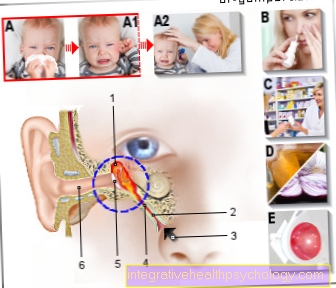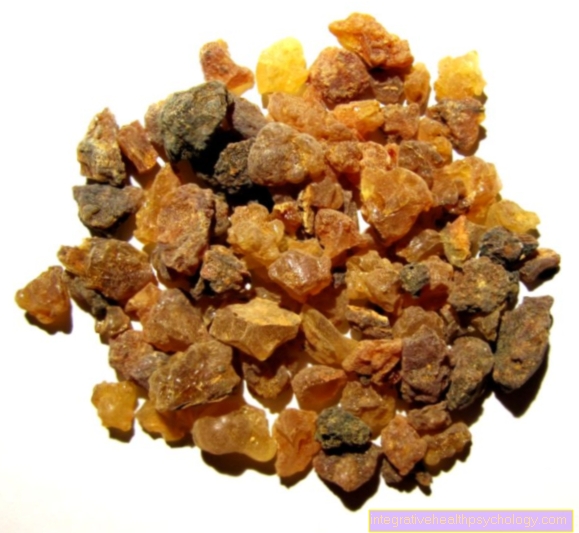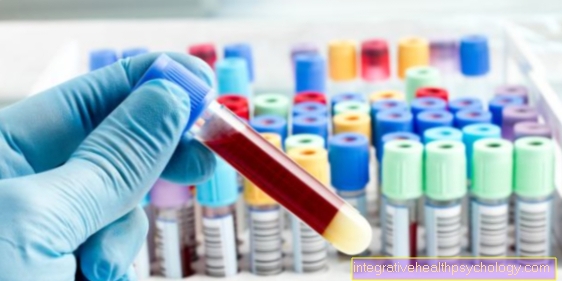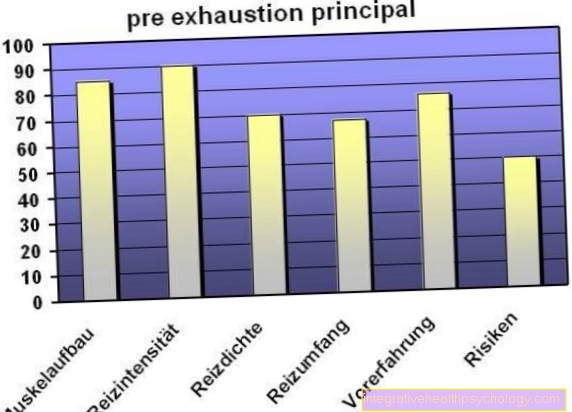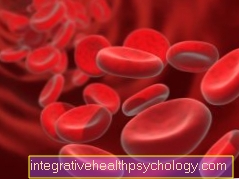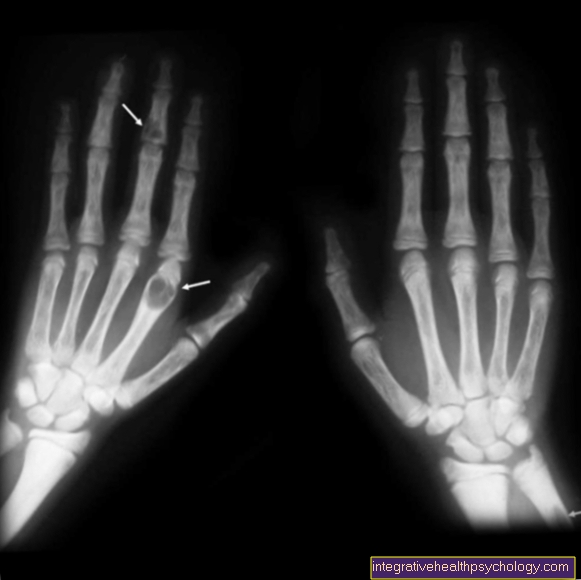Vitamin B1 - thiamine
to overview Vitamins
Occurrence and structure
Thiamine occurs in both vegetable and animal products. Characteristic of its chemical structure are a Pyrimidine ring (contains two nitrogen (N) Atoms in its six-membered ring) and a Thiazole ring (contains a sulfur (S.) Atom in its five-membered ring).
Occurrence:
- vegetable: (Wheat germ, sunflower seeds, soybeans)
function
Thiamine must first be activated in order to be able to fulfill its functions in the body. This is done by adding two phosphate residues that are coupled to one another (Pyrophosphate), as these two are linked by an energetic bond. In this activated form, thiamine is an auxiliary factor (Cofactor) in reactions from
- Citric acid cycle (here it serves the enzyme alpha-ketoglutarate dehydrogenase as a helper)
- Pyruvate conversion to acetyl-CoA (helper of Pyruvate dehydrogenase)
- Pentose phosphate route (Helper of transketolase)
Excursus on these metabolic pathways:
The Pyruvate dehydrogenase reaction follows glycolysis (conversion of the sugar glucose into pyruvate with - but less - energy yield) and converts the pyruvate formed there Acetyl-CoA um that is then introduced into the citric acid cycle. This reaction only takes place if there is enough oxygen, so it works aerobic from.
The subsequent citric acid cycle (citric acid cycle or tricarboxylic acid cycle) also only takes place under aerobic conditions and serves to provide so-called reduction equivalents. These can be converted into energy in the form of ATP (adenosine triphosphate, which is the body's energy currency, so to speak) in the subsequent respiratory chain. In the citrate cycle, acetyl-CoA is broken down into carbon dioxide with the formation of these reduction equivalents and with the production of two energy-rich compounds (GTP - guanosine triphosphate, a brother of ATP, so to speak).
Of the Pentose phosphate route is primarily used to provide NADPH reduced nicotinamide adenine dinucleotide phosphate), which is essential for protection against oxygen radicals, which can cause great damage in the organism.
Deficiency symptoms
From Thiamine deficiency resulting deficiency disease is called Beriberi and is hardly found in industrialized countries today. On the other hand, in countries where polished rice is mainly consumed, it still does not have any Thiamine contains.
Symptoms are skeletal muscle wasting, cardiac dysfunction and water retention (edema).
Overview of vitamins

Water-soluble (hydrophilic) vitamins:
- Vitamin B1 - thiamine
- Vitamin B2 - riboflavin
- Vitamin B3 - niacin
- Vitamin B5 - pantothenic acid
- Vitamin B6 - pyridoxal / pyridoxine / pyridoxamine
- Vitamin B7 - biotin
- Vitamin B9 - folic acid
- Vitamin B12 - Cobalamin
Fat-soluble (hydrophobic) vitamins:
- Vitamin A - retinol
- Vitamin C - ascorbic acid
- Vitamin D - calcitriol
- Vitamin E - tocopherol
- Vitamin K - phylloquinone / menaquinone

